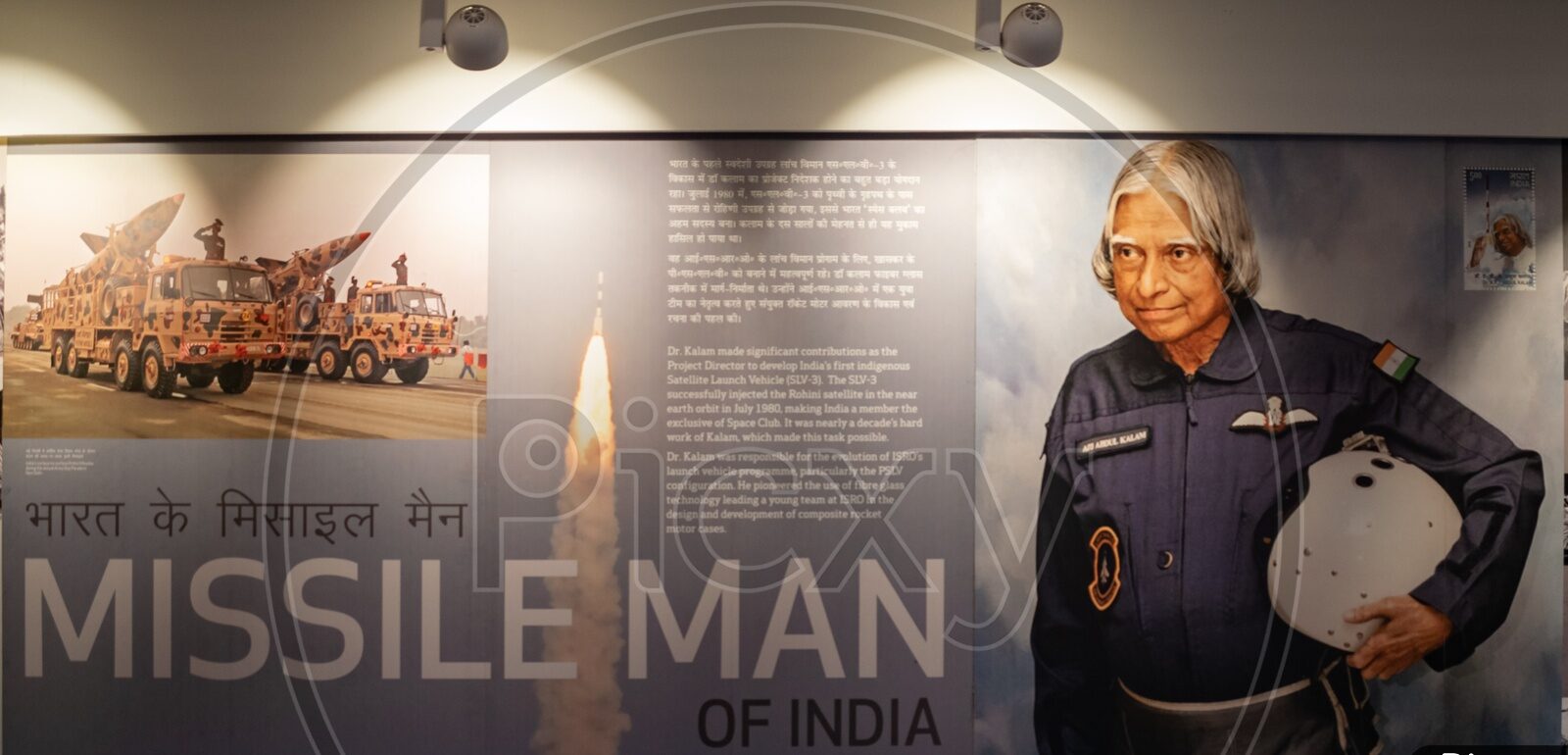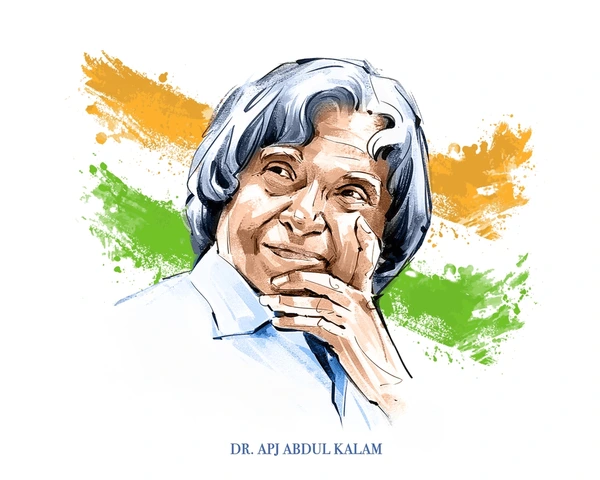APJ Abdul Kalam: The Visionary Scientist and People’s President
APJ Abdul Kalam: The People’s President and Visionary Scientist

You May Like : Narendra Modi Life’s Journey
Early Life and Education
APJ Abdul Kalam, also known as Avul Pakir Jainulabdeen Abdul Kalam, was born on October 15, 1931, in Rameswaram, a small town in Tamil Nadu, India. Raised in a humble household, Kalam’s father, Jainulabdeen, was a boat owner and imam, while his mother, Ashiamma, was a homemaker. Despite their modest means, Kalam’s parents instilled in him a deep sense of discipline, humility, and a passion for learning.
During his early years, Kalam displayed a keen interest in science and mathematics. He attended Schwartz Higher Secondary School in Ramanathapuram, where his inquisitive mind and dedication to studies stood out. After completing school, he pursued a degree in physics from Saint Joseph’s College, Tiruchirappalli. However, his fascination with aeronautics led him to enroll at the Madras Institute of Technology (MIT), where he specialized in aerospace engineering. This academic foundation laid the groundwork for his remarkable career.
Contributions to India’s Space and Defense Programs
After graduating from MIT in 1960, Kalam joined the Aeronautical Development Establishment of the Defence Research and Development Organisation (DRDO) as a scientist. In 1969, he transferred to the Indian Space Research Organisation (ISRO), where he led the development of India’s first indigenous Satellite Launch Vehicle (SLV-III). This successful project launched the Rohini satellite into orbit in 1980, marking a significant milestone for India’s space ambitions.
Kalam’s work was not confined to space exploration. He returned to DRDO in the 1980s to lead the Integrated Guided Missile Development Program (IGMDP). Under his leadership, India developed and tested several key missile systems, including the Agni and Prithvi missiles. His efforts earned him the title of “Missile Man of India,” and his work solidified India’s position as a formidable force in defense technology.
His leadership and scientific contributions were recognized widely. In 1997, he was awarded the Bharat Ratna, India’s highest civilian honor, acknowledging his pivotal role in advancing the nation’s scientific and defense capabilities.
Presidency: The People’s President
In 2002, APJ Abdul Kalam was elected as the 11th President of India. Despite being a scientist with no formal political background, his immense popularity and vision for a progressive India made him a beloved candidate. His presidency was marked by his accessibility to the public, especially young people. He frequently interacted with students, inspiring them to dream big and pursue careers in science and technology.
During his term, Kalam focused on key national issues, including education, youth empowerment, and technological development. He launched initiatives to promote e-governance and aimed to bridge the digital divide across rural and urban India. His vision for the country was encapsulated in the document “India 2020,” which outlined his roadmap for transforming India into a developed nation.
Kalam’s humility and dedication to the nation earned him the affectionate title “The People’s President.” His ability to connect with people across social and economic backgrounds set a precedent for future leaders.

Philosophy and Vision for India
Throughout his life, APJ Abdul Kalam championed the power of education and innovation. He believed that the youth of India held the key to the nation’s future. In his widely read books, such as “Wings of Fire” and “Ignited Minds”, he emphasized the importance of self-reliance, scientific inquiry, and national pride.
Kalam advocated for a vision he called “Developed India 2020,” which prioritized technological advancement, agricultural growth, and quality education. His dream was to see India emerge as a global leader through scientific innovation and human development. His speeches and writings consistently reinforced these values and continue to inspire generations.
Post-Presidency and Legacy
After concluding his term as President in 2007, Kalam remained active in public life. He returned to academia, delivering lectures across the world and mentoring future scientists. His commitment to education was unwavering, and he continued to engage with students and policy-makers to promote his vision for a better India.
Kalam also collaborated with institutions to foster innovation and research. He believed that India needed to invest in cutting-edge technologies while maintaining a focus on social equity and environmental sustainability.
On July 27, 2015, while delivering a lecture at the Indian Institute of Management (IIM) Shillong, APJ Abdul Kalam collapsed and passed away from a cardiac arrest. His death was mourned across the nation, and he was remembered as a beacon of hope, knowledge, and service.
Awards and Recognitions
APJ Abdul Kalam received numerous accolades throughout his life. In addition to the Bharat Ratna, he was honored with the Padma Bhushan (1981) and Padma Vibhushan (1990). Internationally, his contributions to science and education earned him respect and recognition from universities and global organizations.
Kalam’s legacy lives on through institutions and scholarships established in his name. His inspirational words and actions continue to guide aspiring leaders and innovators worldwide.
Personal Life and Values
Despite his global recognition, Kalam led a simple and disciplined life. He was a vegetarian, maintained a modest lifestyle, and was deeply spiritual. His love for music, particularly the veena, and his fondness for poetry reflected his multifaceted personality.
Kalam’s core values included hard work, humility, and perseverance. He believed that greatness could be achieved through a combination of knowledge, character, and dedication to serving others. His life exemplified these principles, making him a role model for millions.
Conclusion: A Legacy That Lives On
APJ Abdul Kalam’s journey from a small town in Tamil Nadu to the highest office in India is a testament to his indomitable spirit and vision. As a scientist, he propelled India into new technological frontiers. As a President, he inspired a nation to dream bigger and work harder.
His enduring legacy is not just in the missiles he helped develop or the policies he shaped but in the millions of minds he ignited with hope and ambition. His life remains a beacon for those who aspire to transform the world through knowledge, compassion, and relentless pursuit of excellence.
You can know more about him on WIKIPEDIA
Leave a Reply